Creation: Cosmic Evolution Part II
 A guest post today from my brilliant husband, Gregg.
A guest post today from my brilliant husband, Gregg.
The 6 types of evolution taught in the average public school, the first 5 being types of Darwinian evolution, and the last being simple modifications within kind or changes within kind and not even technically “evolution” are:
- Cosmic evolution
- Stellar evolution
- Chemical evolution
- Abiogenesis—Life from non-life
- Macro-evolution
- Micro-evolution (Changes within kind – not really evolution)
Cosmic evolution
As I stated last week, there are two main categories of problems with the Big Bang theory, the currently accepted theory of how the universe and all space, time, and matter came into existence. First, there are some clear logical problems which I covered in my previous post. Second, there are just thousands of scientific problems. In addition to violating logic and common sense, the theory stands in clear violation of physical laws and celestial mechanics.
What made everything go BANG in the first place?
As Thomas of Aquin put it so elegantly nearly 800 years ago, “Everything that is caused is caused by something else. An infinite regress of causation is impossible.” So what caused the Big Bang? What caused the universe? Darwinists have provided three possible answers.
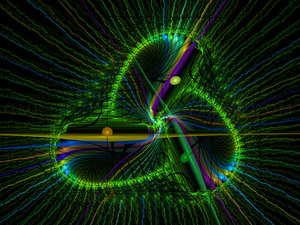 Number 1: Perhaps “Another Universe” experienced a “Quantum Fluctuation” that caused the Big Bang which resulted in our universe. Wow. Okay, then, What caused that other universe? Another Big Bang? So, another quantum fluctuation in yet another universe caused that? How about, “What caused all these quantum fluctuations?” Is quantum space really that unstable? By way of explanation, this is a great example of a logical fallacy known as “begging the question” but it doesn’t answer anything scientifically.
Number 1: Perhaps “Another Universe” experienced a “Quantum Fluctuation” that caused the Big Bang which resulted in our universe. Wow. Okay, then, What caused that other universe? Another Big Bang? So, another quantum fluctuation in yet another universe caused that? How about, “What caused all these quantum fluctuations?” Is quantum space really that unstable? By way of explanation, this is a great example of a logical fallacy known as “begging the question” but it doesn’t answer anything scientifically.
Number 2: Nothing. No reason. How do you like that for an answer? This is the answer that is gaining the most popularity in Darwinist circles, although it isn’t a scientific answer. Science is supposed to model reality, and be predictive. Just as Copernicus modeled the orbits of a heliocentric solar system, refined by Keplar and Newton, that model ultimately resulted in predicting the presence of — and discovering — the outer planets. Nothing in observable science happens for NO REASON. Why would the entire universe be an exception?
Number 3: We can’t know. Really? So, when it comes to Big Bang, the entire theory is nothing more than the substance of things hoped for, the evidence of things not seen? Isn’t that the definition of FAITH? So, when it comes to this theory, we should just take it on faith, based on some half-baked notions of fallible man, who may or may not be operating under a dishonest agenda?
Scientific Problems:
According to the Big Bang theory, in the beginning, there was no matter, just nothingness. Then this nothingness condensed by gravity into a single, tiny dot much smaller than a period on a typed page that spun, got hot, and decided to explode. The resultant explosion produced protons, neutrons, and electrons which flowed outward at incredible speed throughout empty space; because there wasn’t any other matter in the universe. As these protons, neutrons, and electrons hurled themselves outward at supersonic speed, they supposedly formed themselves into typical atomic structures of mutually orbiting hydrogen and helium atoms.
Gradually, the outward-racing atoms supposedly began circling one another, producing gas clouds which then pushed together into stars. These first theoretical stars, called Proto-Stars so they have a sufficiently authoritative scientific sounding name, only contained the lighter elements of hydrogen and helium. Then all of these proto-stars repeatedly exploded. It took at least two explosions of each star to produce our heavier elements. To be clear, the same stars theoretically blew themselves apart over and over and over again.
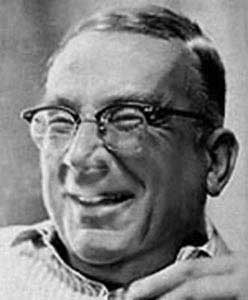
So, according to George Gamow who is mainly responsible for this theory gaining wide acceptance, emptiness fled from the vacuum of space in violation of physical law and rushed into a superdense core, that had a density of 1094gm/cm2.
That is a lot of density for nothing! The fact is that while matter can become dense, nothing cannot lend toward any kind of density because nothing is, well, nothing. Nothing is an absence of everything, not a presense of anything. That includes density.
But according to Gamow this was some very dense nothing and darned hot, too. It had a temperature in excess of 1039 degrees absolute. That is a lot of heat for nothing. Especially once you realize that it is impossible for nothing to get hot!
Matter, like air, can get hot. An absense of matter cannot get hot. Heat is energy. Energy is just transformed matter. This is why we have the first law of thermodynamics. But nothingness is an absence of matter and and absence of energy. In point of fact, nothing is an absense of everything. Nothing can become neither dense nor hot. Things like air get hot, because air is matter, not an absence of it, and some of the matter in air can be transformed into energy which nothing cannot do since it is nothing.
 So, where did this “superdense core” of nothingness come from? George Gamow solemnly came up with the authoritative scientific explanation. He claimed the superdense core of nothing came about as a result of “the Big Squeeze” when the emptiness made up its mind to crowd together and condense. This title may or may not have been inspired by episode 28 of the popular Superman television show starring George Reeves.
So, where did this “superdense core” of nothingness come from? George Gamow solemnly came up with the authoritative scientific explanation. He claimed the superdense core of nothing came about as a result of “the Big Squeeze” when the emptiness made up its mind to crowd together and condense. This title may or may not have been inspired by episode 28 of the popular Superman television show starring George Reeves.
With authoritative scientific aplomb, Gamow dubbed his theoretical solid core of nothing, “ylem” (pronounced “ee-lum”). With an authoritative and highly scientific sounding name like that, who wouldn’t think this must be revelation of a great scientific truth of some kind?
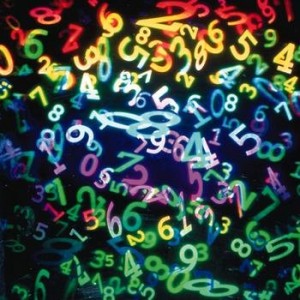 In addition, numbers were provided to add additional authoritative scientific flair. This remarkable lack-of-absolutely-anything kind of nothing was said by Gamow to have a density of 10 to the 145th power g/cc, or one hundred trillion times the density of water. Now, for the record, water is made of matter, which is something — not nothing — and therefore water is always many times more dense than nothing, even a great deal of nothing.
In addition, numbers were provided to add additional authoritative scientific flair. This remarkable lack-of-absolutely-anything kind of nothing was said by Gamow to have a density of 10 to the 145th power g/cc, or one hundred trillion times the density of water. Now, for the record, water is made of matter, which is something — not nothing — and therefore water is always many times more dense than nothing, even a great deal of nothing.
Then all that packed-in super hot super dense spinning nothing went BANG!
That’s the theory. I kid you not.
In its infancy, it was a simple theory. As more and more evidence piled up to refute it, more and more complexity was added to the details. More and more assumptions were made. More and more “refined Big Bang” theories sprang into existence. Even more assumptions were made. Even more complexity was added to those details, until the entire theory became a muddled mess of false assumptions, contradictory details, and very arcane complexity. The more difficult to understand, the more complex, the more arcane, it seems, the better. The result is that Big Bang now is just very bad science.
Any intelligent fool can make things bigger and more complex. It takes a touch of genius and a lot of courage to move in the opposite direction. — Albert Einstien
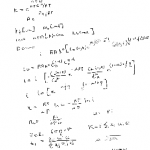 Science is not complex. Did you know that every single equation to express every known law in the entire universe can be expressed using average handwriting on a single sheet of paper with plenty of room to spare: all the laws of motion, thermodynamics, and physics. That elegance and beauty, that simplicity and balance, dominates truth and reality in good science.
Science is not complex. Did you know that every single equation to express every known law in the entire universe can be expressed using average handwriting on a single sheet of paper with plenty of room to spare: all the laws of motion, thermodynamics, and physics. That elegance and beauty, that simplicity and balance, dominates truth and reality in good science.
Scientific reasons why matter could not result from the theoretical Big Bang
I would like to make a just few points about why Big Bang is such a preposterous theory.
Is the Premise a Chicken or an Egg? The premise of Big Bang is that everything, absolutely everything– except gravity — everything else, including time and space itself, was all packed into a single point by gravity. Why was gravity separate from absolutely everything else? This leads to a chicken and egg problem. The problem for Bangers is that gravity is directly related to the existence of mass. If there was no matter in the universe, there could not have been any mass, therefore there could have been no gravity. In that case, when the Big Bang created matter, gravity should have also been created. If gravity were not created until after the Big Bang, then gravity could not pack absolutely everything (which was a bunch of nothing) together into a single point prior to the Bang, because gravity would not have existed yet.
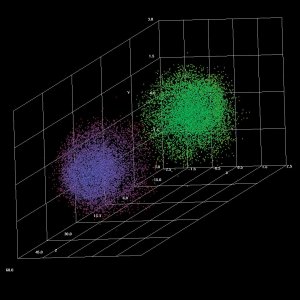 There is not enough antimatter in the universe. This is a big problem for Big Bang theorists. Assuming it could even happen, the original Big Bang would have produced equal amounts of positive matter (matter) and negative matter (antimatter). But only very small amounts of antimatter exist in our universe.
There is not enough antimatter in the universe. This is a big problem for Big Bang theorists. Assuming it could even happen, the original Big Bang would have produced equal amounts of positive matter (matter) and negative matter (antimatter). But only very small amounts of antimatter exist in our universe.
The antimatter from the Big Bang would have destroyed all the matter. This fact is well-known to physicists. Since Big Bang should have produced equal amounts of each, the universe shouldn’t exist. As soon as both matter and antimatter are produced in the laboratory, they instantly come together and annihilate one another. The same thing happens in nature.
The calculations are too exacting. On many points, the theoretical mathematical calculations needed to turn a Big Bang into stars and our planet cannot be worked out; in others they are too exacting. Knowledgeable scientists call them “too perfect.” Mathematical limitations would have to be met which would be well beyond a figure that was already mathematically impossible to achieve. The parameters for success are far too narrowly defined.
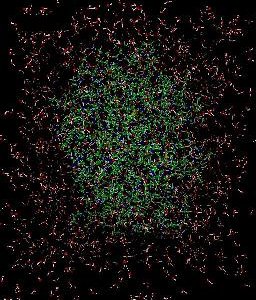 Nothingness cannot pack together. It would have no way to push itself into any kind of dense mass since nothingness has no mass.
Nothingness cannot pack together. It would have no way to push itself into any kind of dense mass since nothingness has no mass.
A vacuum has no density. It is said that the nothingness got very dense, and that is why it exploded. But a total vacuum is the total opposite of total density.
Nothingness doesn’t get lumpy. If there was just nothing at the outset and then all the nothing condensed, in what medium did the condensed nothing exist? More nothing? Why did it not also condense? The gravity that condensed the initial nothing would have also condensed the nothing surrounding it as well. Or was this a special “lump” of somehow more dense nothingness in a vast medium of somehow more rarified nothing?
There would be no ignition source to explode the nothingness. No fire, no match, no spark. It could not be a chemical explosion because no chemicals existed. According to the theory, the explosion created all chemicals. It could not be a nuclear explosion, because there theoretically weren’t any atoms yet, just nothing. According to the theory, the explosion created all matter.
Nothingness is not good fuel. Even supposing there was an ignition source, the fact is that nothingness doesn’t ignite. There could be no fire because there were no chemicals like oxygen. There could be no explosion because there was simply no matter to be explosively transformed into energy. There was only nothing.
There is no way to expand it. How can you expand what isn’t there? Even if that magical vacuum could somehow be pulled together by gravity, what would then cause the single dense point of emptiness to push outward? The “gravity” which brought it together would keep it from expanding.
Nothingness cannot produce heat.The intense heat caused by the exploding nothingness is said to have transformed the nothingness into protons, neutrons, and electrons. This notion does not need contradiction since it contradicts itself.
- First, an empty vacuum in the extreme cold of outer space cannot get hot by itself.
- Second, an empty void cannot magically change itself into matter.
- Third, there can be no heat without an energy source and there can be no energy source without matter.
Scientific refutation even ASSUMING matter COULD result from the theoretical Big Bang.
It is clear, then, that matter could never result from the supposed Big Bang. Taking a gigantic leap and making the assumption that Big Bang could take place and then COULD produce matter, here are scientific reasons why those particles of matter could never form atoms.
There is no way to unite the particles. As the particles rush outward from the central explosion, they would keep getting farther and farther apart from one another.
Outer space is frictionless, and there would be no way to slow the particles. The Big Bang is postulated on a totally empty space, devoid of all matter (that is somehow separate and distinct from nothing), in which a single explosion fills it with outward-flowing matter. In that case, there would be no way those particles could ever slow.
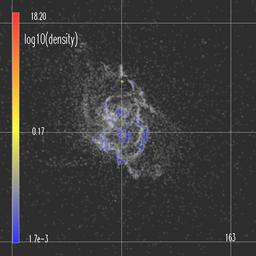 The particles would maintain the same vector (speed and direction) forever. Assuming the particles were moving outward through totally empty space, there is no way they could change direction. They could not get together and begin circling one another.
The particles would maintain the same vector (speed and direction) forever. Assuming the particles were moving outward through totally empty space, there is no way they could change direction. They could not get together and begin circling one another.
There is no way to slow the particles. They are traveling at supersonic speed, and every kilometer would separate them farther from one other.
There is no way to change the direction of even one particle. According to the laws of motion, they would keep racing on forever, never slowing, never changing direction. There is no way to get the particles to form into atoms or cluster into gaseous clouds. Angular momentum [turning motion] would be needed, and the laws of physics preclude it.
How could their atomic structures originate? Atoms,even hydrogen and helium, have complex structures that rely upon strong and weak atomic forces. There is no way that outward shooting particles, continually separating farther from each other as they travel, could arrange themselves into atomic structures.
The Truth:
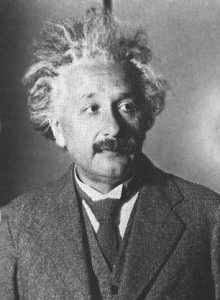 Steven W. Hawking, possibly the most influential theoretical physicist who has ever lived, and who rejected Big Bang decades ago, admitted that he had to use “imaginary” numbers to work out the equations for his own curved space theory. Interestingly enough, replacing the imaginary numbers with actual numbers mathematically transforms his theoretical curved space universe back into a model of our present dimensional reality. Albert Einstein also employed “imaginary” numbers in the equations for his Special Theory of Relativity (not to be confused with his General Theory of Relativity).
Steven W. Hawking, possibly the most influential theoretical physicist who has ever lived, and who rejected Big Bang decades ago, admitted that he had to use “imaginary” numbers to work out the equations for his own curved space theory. Interestingly enough, replacing the imaginary numbers with actual numbers mathematically transforms his theoretical curved space universe back into a model of our present dimensional reality. Albert Einstein also employed “imaginary” numbers in the equations for his Special Theory of Relativity (not to be confused with his General Theory of Relativity).
The truth is that no human being either alive or dead, no matter how intelligent, has ever presented a plausible explanation for how the universe came to be absent a Creator.
The truth is that a secular humanist worldview coupled with a dogma of methodological naturalism colors all interpretations of scientific facts which pollutes any conclusions drawn against those interpretations. The truth is that the philosophical religious beliefs of secular humanism allow for an agenda that can flatly ignore facts and evidence that contradict the humanist worldview. Contradictory facts and evidence amount to heresy in the context of the humanist religion.
The truth is that scripture tells us, and science confirms, that the heavens are telling the glory of God. The perfection of God’s creation surrounds us on a very grand scale. He made light and darkness, the heavens and the earth, the waters and the land, and every living thing. He spoke it into existence. And God made man. Male and female created He them. And He made the stars, also.
God bless you and yours. Gregg
Resources:
Additional Posts dealing with Creation and Darwinism

